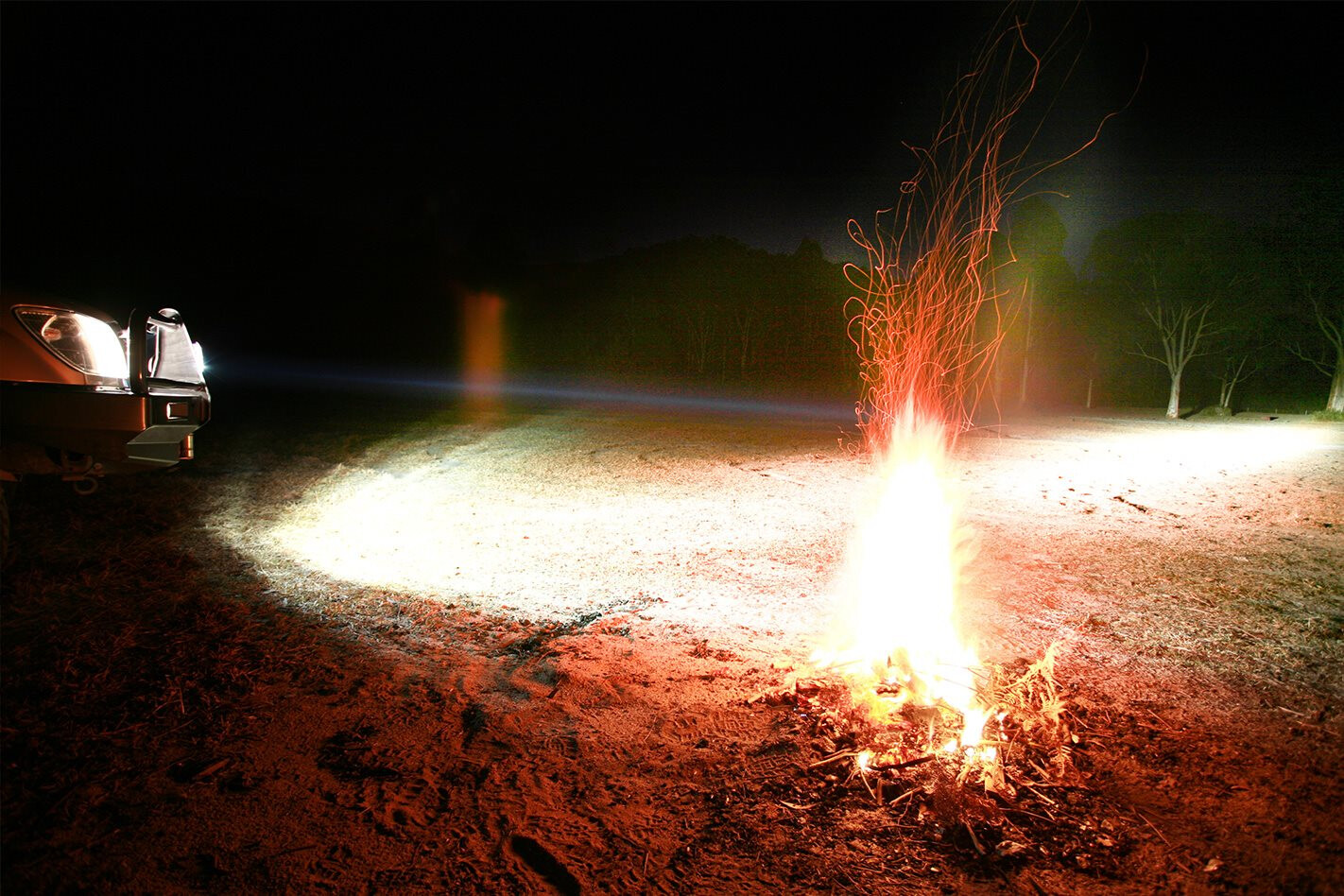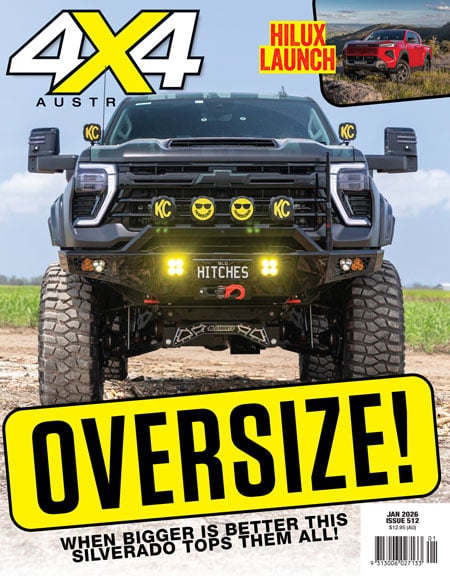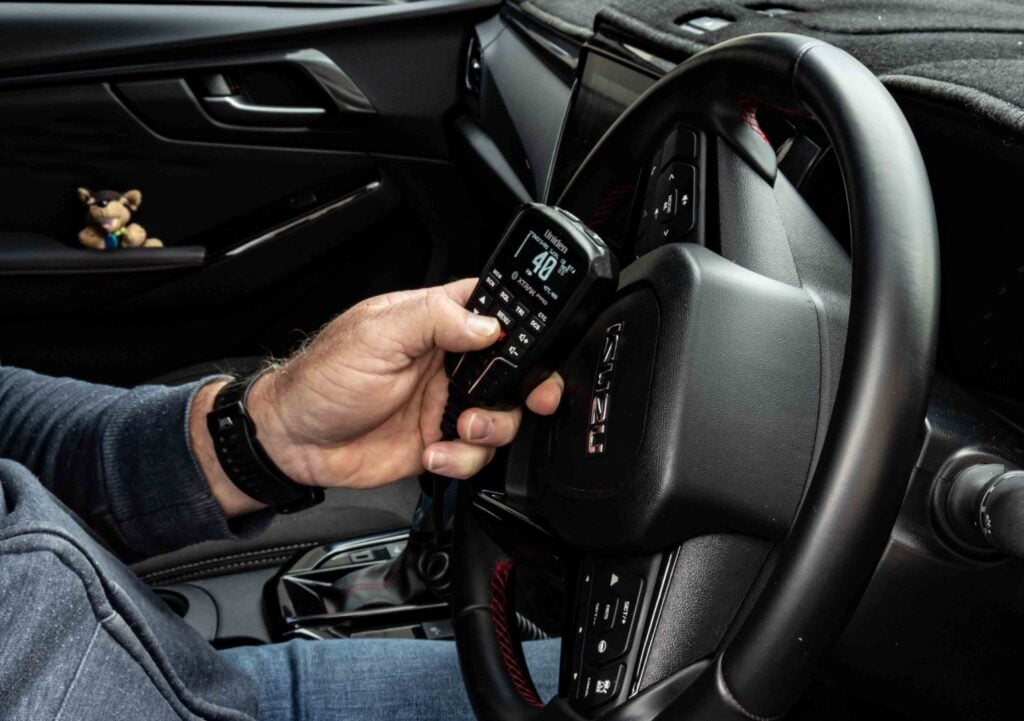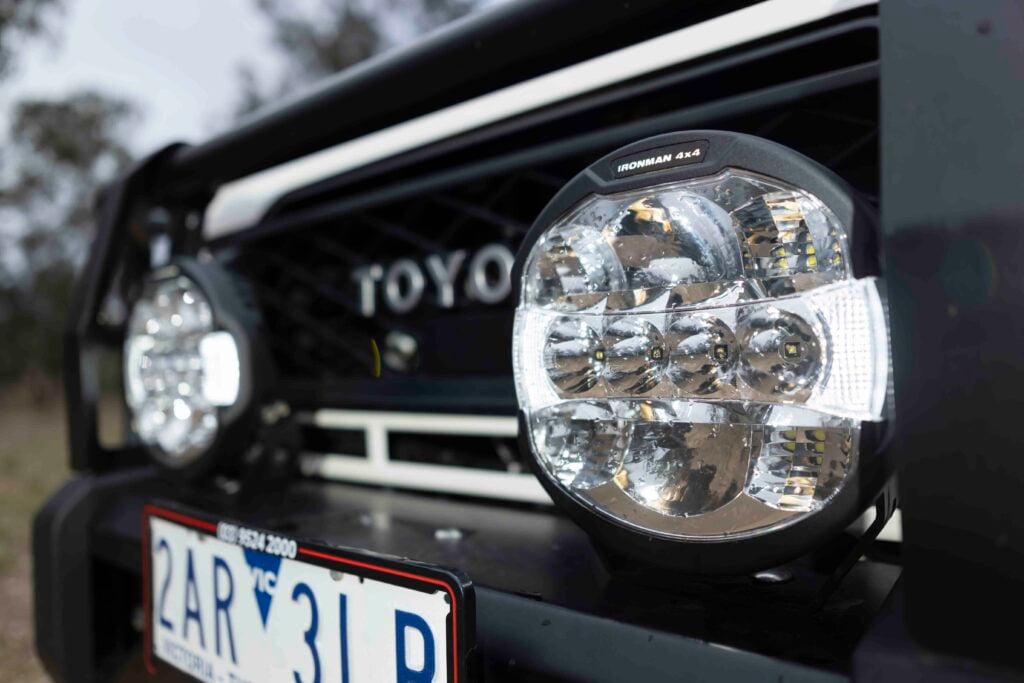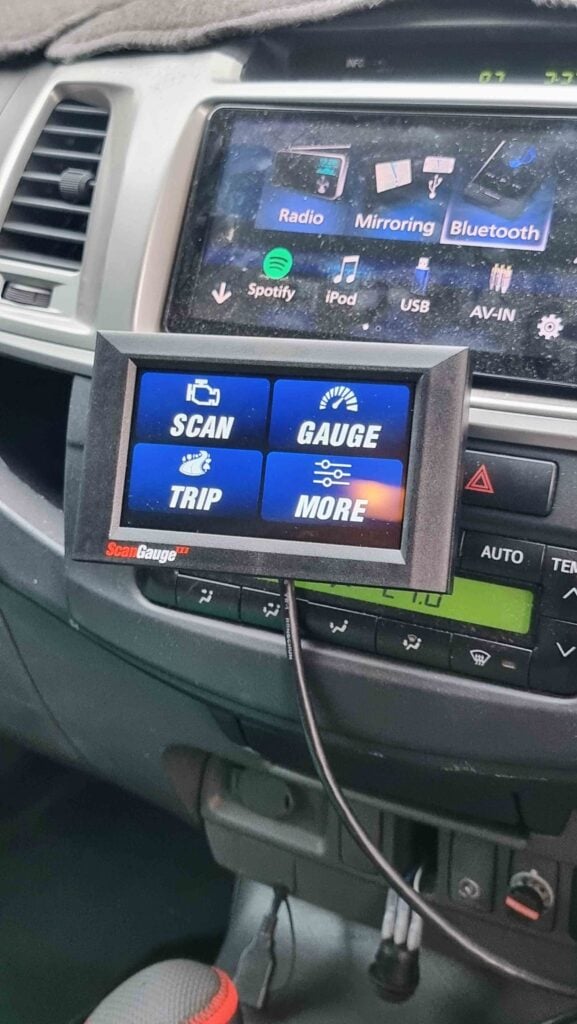I remember tootling around the countryside with 100W halogen driving lights, upgrading them with whopping 120W and 150W bulbs, melting the reflectors and replacing the bulbs after a few thousand corrugations.
And I was still a little unsure of what lay along the sides of the road, waiting to pounce into the path of my 4×4.
Enter HID lights. My trusty Land Cruiser spent close to seven bright years with a set of superb 35W HIDs blazing away. Sure, I could see almost a kay down the track if it was straight enough for the laser-like beam to cut through the mist, but I was still left a little unsure of the sidelines.
Most recently, LED lights hit the scene. That, combined with this magazine’s light testing, which has seen close to 40 sets of lights grace the Cruiser’s front bar, led me to think that my newly acquired LEDs were the duck’s nuts of aftermarket driving lights.
Then came FYRLYT, with its crew declaring the advantages of good old halogen driving lights. They suggested that their latest and upgraded product, the Nemesis 9000, was not only as bright as HID but was also safer to drive with, given that the projected light spectrum was similar to natural daylight.
Wow, huge claims indeed! Claims that had to be tested.
With 500W of firepower (yep, you read right – each light packs a 250W halogen globe), we set out with another two sets of lights – HID and LED – fitted to our test vehicle’s bullbar.
Now, before we get into the lights’ performance, I need to point out that, because of the current draw, we had to install a completely new wiring loom to FYRLYT’s specs, with much thicker wiring, two 40-amp fuses, two relays and a 12V-24V converter. Yep, although this light kit is designed to run on a 12V vehicle, the actual bulb is a 24V unit, so it requires a DC-DC stepdown converter, which is included in the kit.
Next, we need to examine a couple of FYRLYT’s claims, which are that halogen’s CRI (colour rendering index) light output (colour, not brightness) is closer to real daylight than LED, and that LED light output can make it harder to detect objects in the 600 to 800 nanometre colour range – that’s the orange/brownish/reddish darker end of the colour chart. Crikey, isn’t that the colour range of most of the beasts involved in animal strikes?
Holy cow, roo, wild pig and wombat – that means the very animals we are trying to spot while piloting our rigs at 100km/h through the back blocks are the ones that are hardest to see if you’re using the wrong type of driving light. Surely not!
There are a few technicalities that need to be remembered when testing and comparing lights of different types (halogen, LED and HID). For one, brightness is not whiteness. That is, a light can be bright without being white.
Conversely, whiteness is not a measure of brightness. That is, just because it’s a white light doesn’t mean it’s a bright light. Got it? Good!
Now, as halogens are a ‘warmer-coloured’ light than LEDs – that is, not as white or blueish – they may seem less bright, but that’s not really the case. A warmer light can be brighter.
The reason I’ve outlined this very important point is that it’s all too easy to write off a warmer light being not as good as a whiter light.
That was my first reaction when I unleashed 500W of Nemesis – they didn’t seem very white. But when my brain clicked in and I realised I could see a lot of the road, the trees and the paddock out to the sides, both close to my vehicle and a long way away, I understood how good these lights really were.
Running multiple wiring looms, I had the ability to switch between halogen, HID and the LED light bar, and I found everything was easier to see, the drive was more comfortable and the colouring with the halogen FYRLYT lights was more realistic. By contrast, the LED and HID lighting seemed less natural and their tinged colouring made some roadside furniture look almost fake.
Sure, I could see a long way down the road with the HIDs, although they didn’t have a huge, even spread-pattern. And, yes, the LED bar gave great spread, but it lacked outright range. I liked the Nemesis halogens more and more each time they were flicked into action.
Strangely, I felt more comfortable with the warmer glow, but I still had to get my brain around the fact of being able to see just as much (if not more) as I could with white light. The same went for my passenger during the testing; he agreed he could see more and that Nemesis halogens were kinder to the eyes.
The broad spread of light from the Nemesis comes down to the design of the reflector, not just the light colour or brightness. The deep-dished housing has been designed perfectly to turn a treacherous track into a flood-lit scene.
The Australian-made Nemesis light incorporates a hard-coated lens and reflector, a reinforced high-impact resin body, and a German-made Osram halogen bulb purpose-designed and manufactured for FYRLYT. The light body fits via an aluminium billet base with a vertical bolt for rotational adjustment and a horizontal bolt for tilt adjustment.
A highlight of the system is that each light can be set as a spot or a spread beam via a push and twist of the bulb holder (no tools are needed), plus there’s a Gortex breather to allow air pressure equalisation and waterproofing.
FYRLYT has resisted the use of an additional separate lens protector to allow as much light as possible to pass through the single-layer sacrificial cover. This is easily removed and replaced if needed, without tools. The bulb is also easily replaced without tools, rounding out a light that is fully serviceable and repairable via replacement parts.
The overall dimensions for the deep-dished and simply-designed housing plus its high-strength, vibration-resistant machined-alloy foot is 208mm wide by 220mm high and 150mm deep. Weighing in at 1.1kg each, the 9000-lumen Nemesis is much lighter than most other lights of this size.
Each light comes complete with the DC-DC voltage converter, plug wiring and bulb, and they retail for $990 per pair. FYRLYT does have two cheaper options – a 5000-lumens pair for $599 and a 3000-lumen pair (also $599), while the ground-breaking 9000s are available as a straight 24V system for the trucking industry, for $630 per pair.
For me, the hardest part of fitting the kit was the wiring; there is no off-the-shelf DIY wiring loom available that will handle the current draw, so I assigned the job to my local sparky.
Fitting the lights to the bullbar was as easy as it was in the old days – one bolt into the bar to adjust the direction of the light and one bolt through the base to adjust the tilt of the light; no hard-to-get-at skeleton brackets in sight!
The double-pinned plug is like no other, but it’s included in the kit and plugs straight into the rear of the light body.
While the spot beam is great, I would use the spread beam, as there is no easily discerned loss of illumination distance in this mode as compared with the spot mode. On top of that, the sheer ‘volume’ and quality of light is impressive, and it’s evenly dispersed, both horizontally and vertically. This allows for variations in road surface, while maintaining plenty of light where it’s needed.
Safe night driving is all about having vision far and wide enough to spot any sudden attempts by suicidal animals to cross outback roads. Driving on major highways requires drivers to constantly flick from high to low and back again, and the halogens provide instant-on lighting, with no warm-up time needed.
What does all this tell us? Sure, drool over the photos as much as you like, but keep in mind that photos will never tell you the complete story. Also, never take notice of anyone who hasn’t tested and compared all the different kinds of lights for a decent amount of time.
At 4X4 Australia we have fitted the lights correctly and driven with them, and I can tell you these Nemesis 9000 driving lights won’t be moving from my bullbar – I reckon they are the best set of lights I have ever driven with and I don’t see any reason to use additional lights or bars to get me through my long-distance night drives, other than perhaps some ultra-wide lighting for the odd occasion that I would like to see almost 180 degrees.
So there it is – ‘old’ technology combined with a pile of smart development has tackled the latest and greatest high-tech world and arguably come out on top. For more information or to pick up a set, visit: www.fyrlyt.com.
Cheerio
Huge thanks go out to my local sparkies at Camden Haven Auto Electrical for installing the FYRLYT wiring loom. They constructed the new wiring loom as per the specifications to ensure maximum light output was achieved. Call them on (02) 6559 5511. They’re based at: 9 Bayside Circuit, Laurieton, NSW.
For more driving lights goodness, check out our Round LED driving lights comparison.

